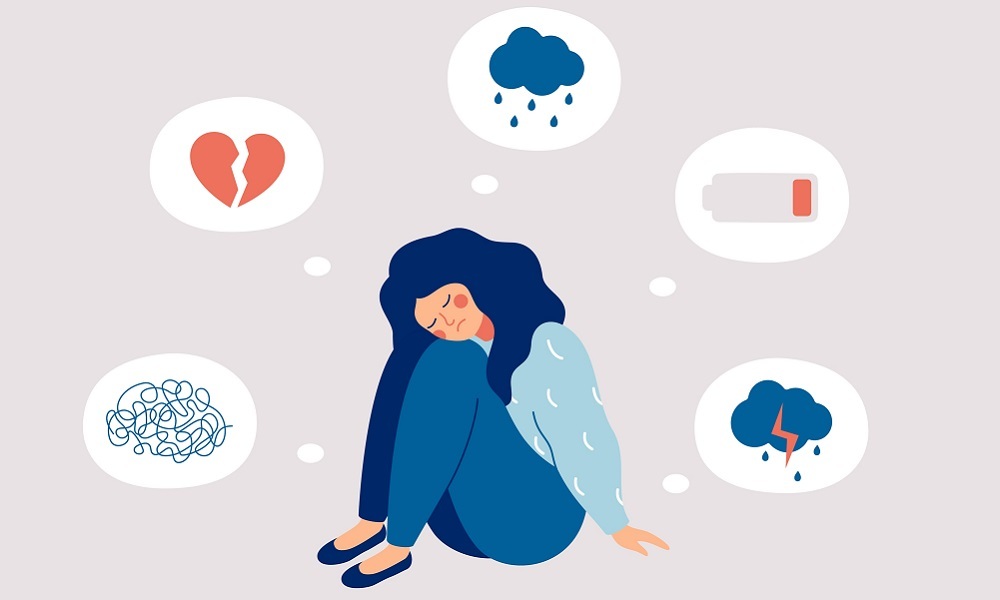Post-traumatic stress disorder (PTSD) can happen after we’ve been through one traumatic event, or after repeated exposure to trauma.
Post-traumatic stress disorder (PTSD) is a group of stress symptoms that can develop after one (or sometimes more than one) traumatic event. For example, it could be a serious injury, a death, or different forms of violence.
Dr Joanne Beames is a Postdoctoral Research Fellow and Psychologist (Clinical Registrar) at the Black Dog Institute. She says there are some key symptoms to look out for when you’re thinking about PTSD diagnostically.
‘The first is re-experiencing the trauma, so, things like flashbacks or intrusive thoughts about the event, or avoiding reminders of the event, like some people that were involved or the place where it happened. Some people may experience guilt, horror or a low sense of pleasure, and also constant feelings of being on edge or hyper vigilant, so looking around for potential danger,’ she tells Wellbeing by Teacher.
‘It’s also quite important to note that feelings of fear, sadness, anger and grief are really common after a traumatic event; it’s really a part of our natural response to danger to keep us safe. What makes PTSD different is that the stress reaction is more persistent, it causes significant distress and interferes with everyday functioning – so things like work, relationships, socialising or even engaging in hobbies or activities that they would have otherwise enjoyed.’
Direct and indirect exposure – what are the differences?
People can experience PTSD after witnessing a traumatic event happening to others, or by experiencing the traumatic event themselves.
Beames explains that direct exposure is when an individual actually experiences a personal trauma or witnesses a traumatic event. ‘Examples include being physically assaulted at work, or seeing the impact of a car accident. And it can even include exposure to large-scale natural disasters, like the recent bushfires in Australia,’ she says.
‘In contrast, indirect exposure is when an individual hears or learns about a traumatic event, so more secondhand. There are lots of different types of traumatic events and people respond to them in different ways. Many people who are actually exposed to a traumatic event, whether its direct or indirect, don’t necessarily develop PTSD and the way people respond is really dependent on their personal experience of past traumas and mental health history,’ she adds.
Key facts and figures
Beames explains that it’s really difficult to get strong evidence or statistics around rates and prevalence of PTSD in Australia because of the nature of it, and the individual ways in which it’s experienced. She says there are estimates that show global PTSD prevalence rates are around 13-20 per cent for women and 6.2-8.2 per cent for men (Bryant, 2019).
‘There’s limited data on prevalence of PTSD in Australia specifically though, some evidence shows about 57-75 per cent of Australians will experience a potentially traumatic event at some point in their lives (Kessler et al., 2017).
‘New onset of PTSD is likely to have increased in recent years, particularly after, as we all know, the large-scale population events like COVID-19 and bushfires,’ she adds.
Signs and symptoms of PTSD
There are some general signs and symptoms of PTSD that you can look out for. They include excessive crying, trouble sleeping, reduced appetite, feeling scared, guilty or angry, or thinking about the traumatic event a lot. Beames says that these feelings can start to effect how people go about their everyday lives.
‘Disturbing memories and feelings can really start to effect how people with PSTD go about their everyday lives – for example, disrupting family relationships or becoming overprotective of loved ones, feeling isolated or lonely, and even withdrawing from friends, family or work. So all of these things are aspects to look out for.’
She says it’s important to remember that PTSD can manifest quite differently for individuals, so there isn’t a one-size-fits-all set of symptoms to look out for.
‘But, one thing that observers or close friends might notice are changes in usual functioning. They know what the baseline level is for how an individual, their friend, usually responds. So withdrawal from social relationships and usual activities, or changes in how the person is interacting, such as being quick to anger or irritable are key to watch out for,’ she says.
PTSD can also impact on a person’s physical health. It can be really overwhelming and exhausting for people, as they’re activating their fight or flight response system.
‘Working to keep individuals alert and safe from potential danger, it can leave some people feeling really tired with physical tension in the body, and it’s also associated with low mood and anxiety,’ Beames says.
‘Low mood and PTSD often comes from that withdrawal from everyday activity because it reduces opportunities for experiencing a range of different events and positive emotions.’
The groups most affected
Some groups in the community have a higher likelihood of trauma exposure than others. Beames says these groups can include those who experience homelessness, young people in out of home care, or under youth justice supervision, refugees, women and children experiencing family and domestic violence, but also LGBTQIA+ people and certain occupation groups – so, those in emergency services or health care workers are prime examples.
‘These occupations often face cumulative traumatic events, so more than one repetitively over time, such as physical assault, witnessing horrific injuries and death. And the impacts of these can really be emphasised by the nature of their work and environment, enormous pressure, burnout and even isolation.’
Beames cites one recent meta-analysis (Yuan et al., 2021) that found that healthcare workers have the highest prevalence of PTSD in the 21st Century, including during the COVID-19 pandemic.
‘Of those highest hit were nurses, frontline workers, and those working in high-risk communities, so it’s pretty concerning,’ she says.
Managing the effects of PTSD
The good news is there are some things people can do to manage the effects of PTSD in their everyday life. According to Beames, seeking social support from friends and family is a good option for some people. ‘This can really help people to feel understood and just get a little bit more support and not feel as isolated potentially,’ she says. ‘But also, maintaining a regular routine is important for mental health generally, including sleep and awake cycles, and exercise are really important to try to maintain.’
While there isn’t a one-size-fits-all approach to managing PTSD, Beames says people might find stress reduction techniques helpful.
‘So for example, if someone is feeling really overwhelmed and is having trouble managing their emotions and distress in the moment, things like deep breathing or progression muscle relaxation could be helpful. But, I think assistance from a health professional, it’s a really great first step to ensure that appropriate supports are in place if someone suspects that they are experiencing PTSD,’ she advises.
‘It is really important to seek help early and there are lots of different treatments available; so, psychological therapies, medication and some self-help strategies. The gold standard is trauma-focused Cognitive Behavioural Therapy (CBT), which can be combined with medication.’
To find out more about these options, reach out to your GP or mental health professional like a psychologist or psychiatrist, who can discuss the best treatment options for you, tailored to your individual needs.
‘Especially with PTSD, a thorough assessment is needed before a treatment plan is developed. What works for one person might be different for another. Individual symptoms will really influence the optimal approach and how people respond,’ Beames explains.
References
Bryant, R. A. (2019). Post‐traumatic stress disorder: a state‐of‐the‐art review of evidence and challenges. World Psychiatry, 18(3), 259-269.
Kessler, R. C., Aguilar-Gaxiola, S., Alonso, J., Benjet, C., Bromet, E. J., Cardoso, G., ... & Koenen, K. C. (2017). Trauma and PTSD in the WHO world mental health surveys. European journal of psychotraumatology, 8(sup5), 1353383.
Yuan, K., Gong, Y. M., Liu, L., Sun, Y. K., Tian, S. S., Wang, Y. J.,… & Lu, L. (2021). Prevalence of posttraumatic stress disorder after infectious disease pandemics in the twenty-first century, including COVID-19: a meta-analysis and systematic review. Molecular psychiatry, 1-17.
How do you care for your own health and wellbeing? Do you have a story you’d like to share with Wellbeing by Teacher? Here’s a handy guide on how to get started.


